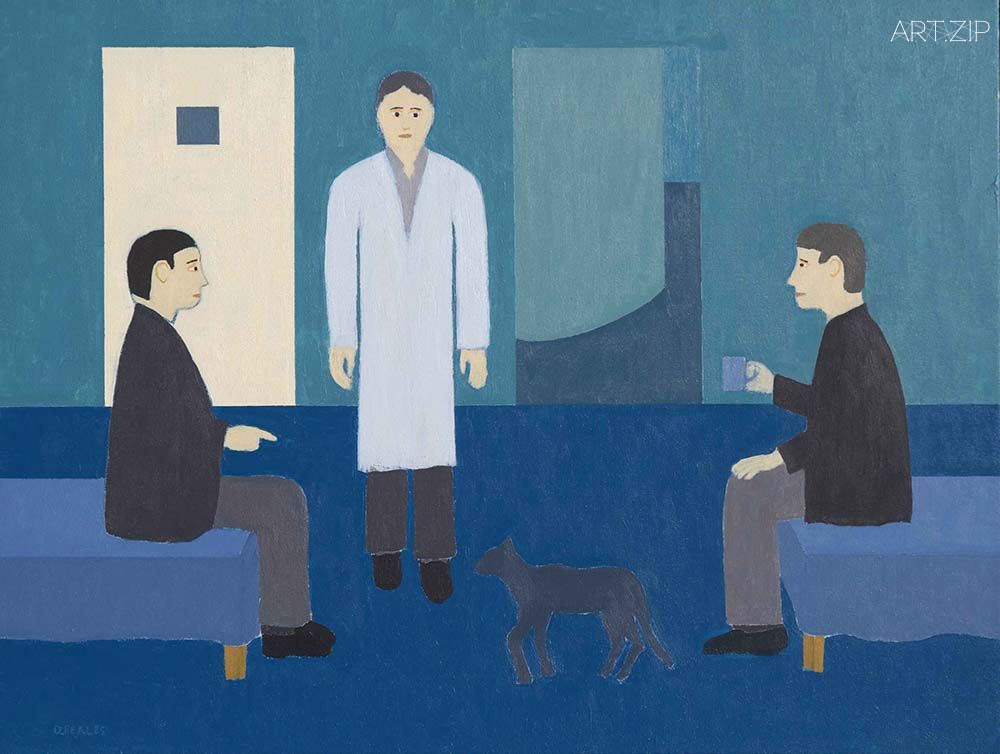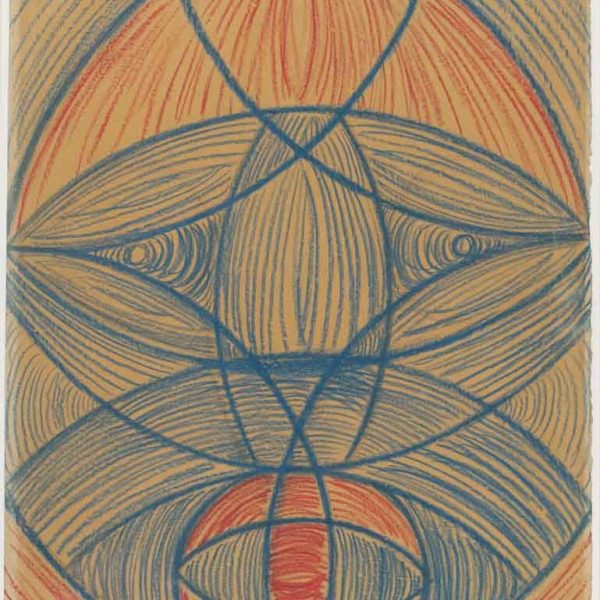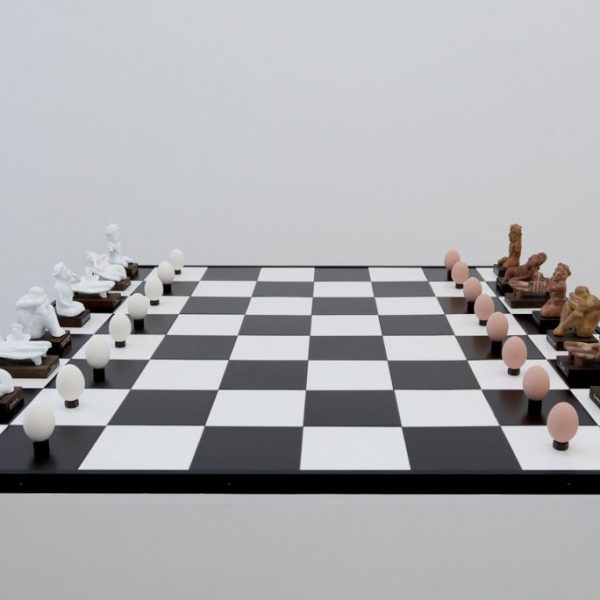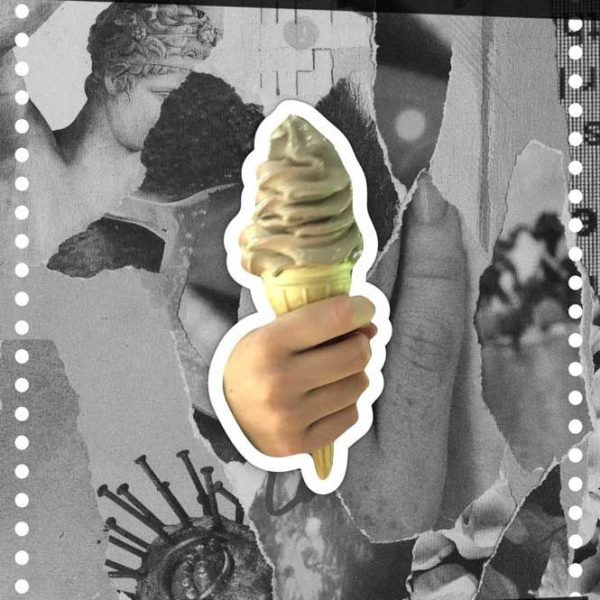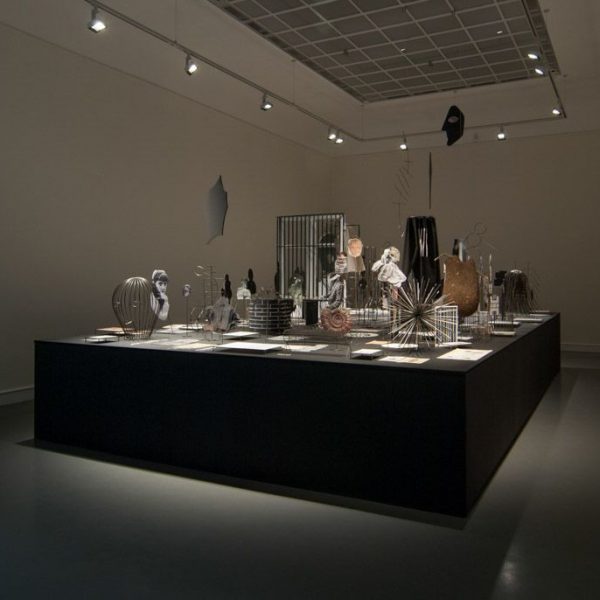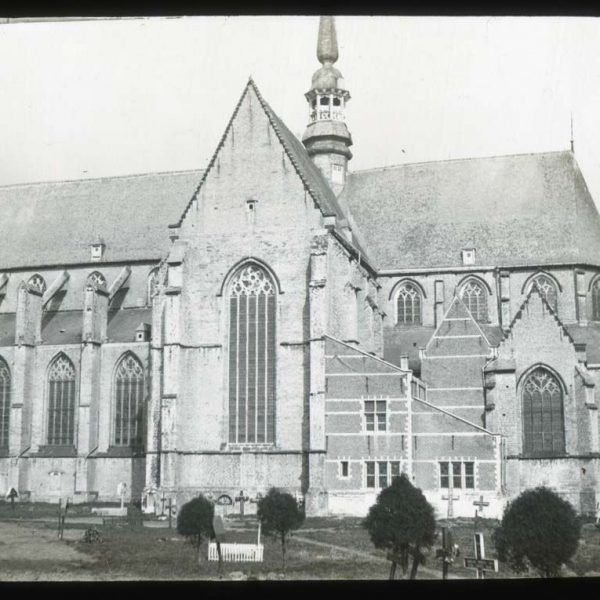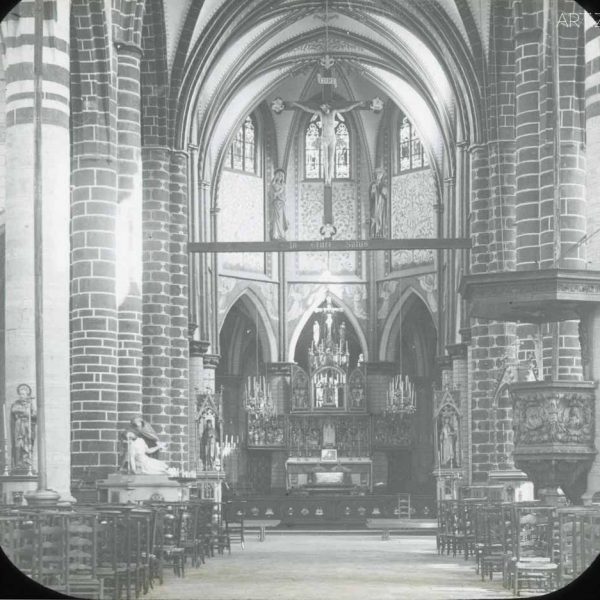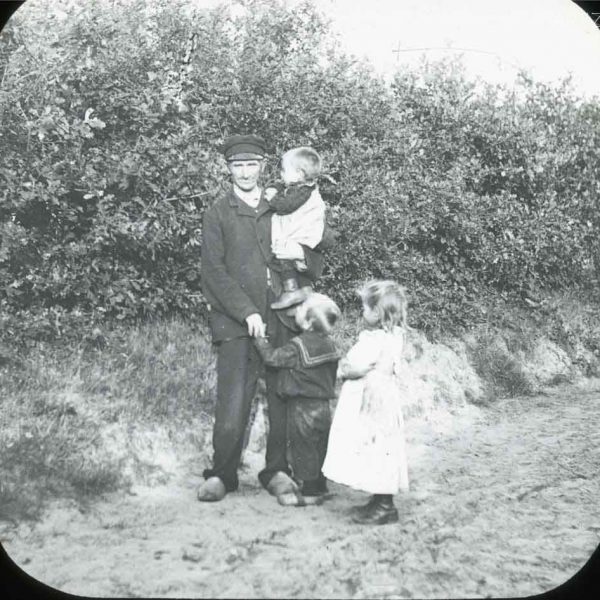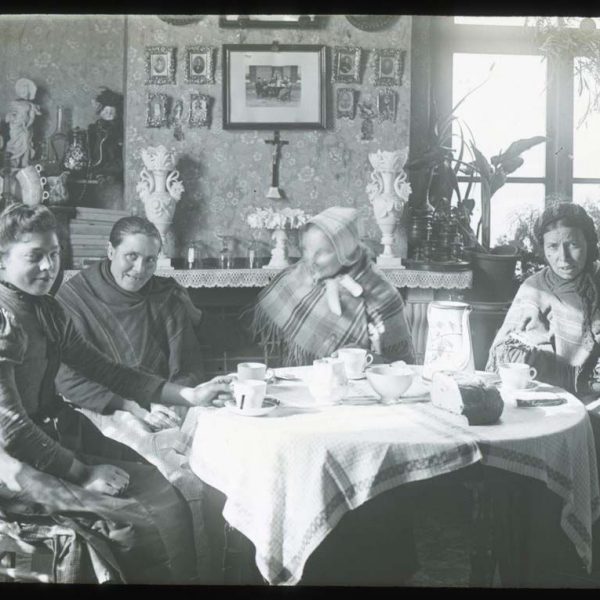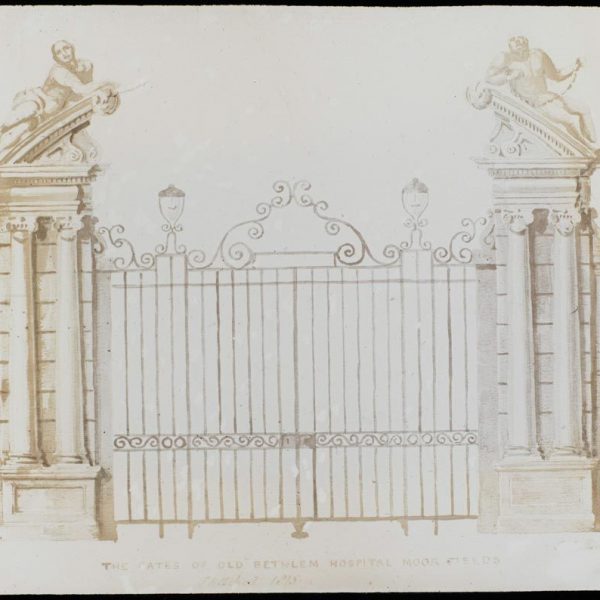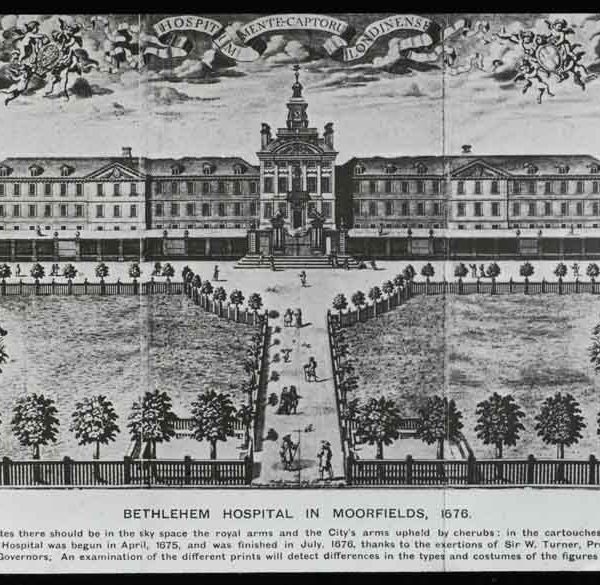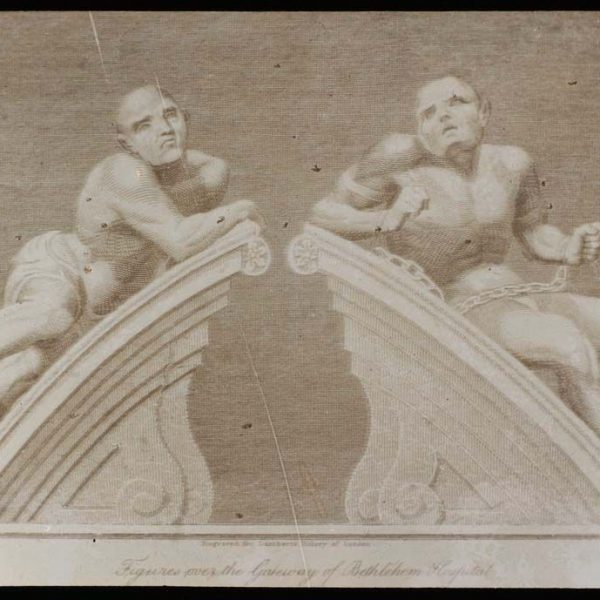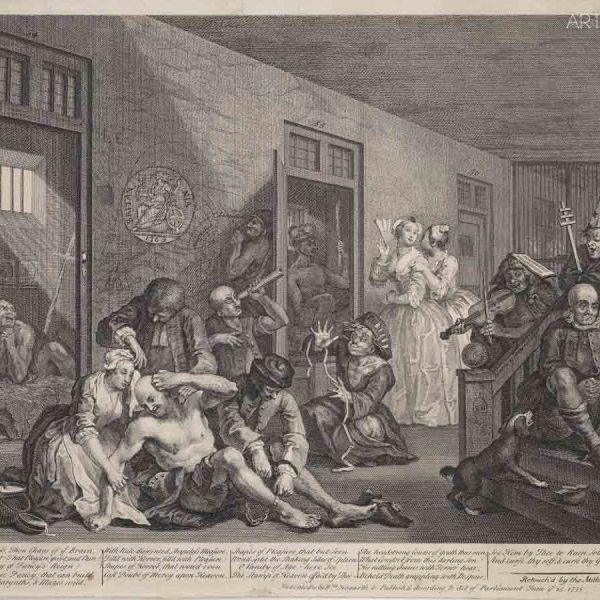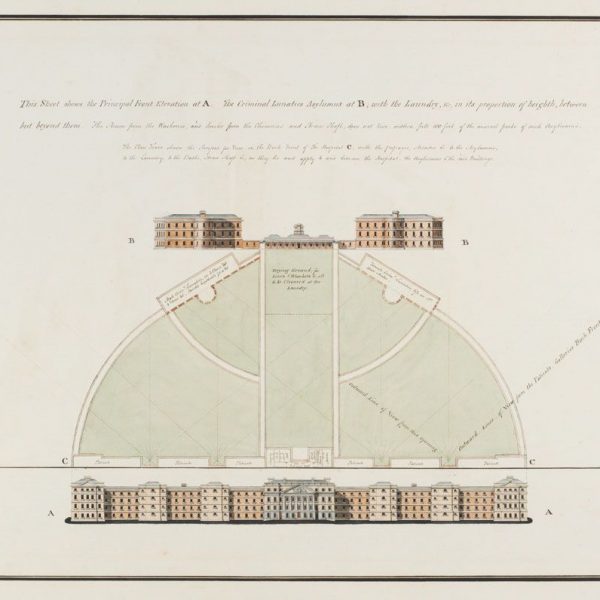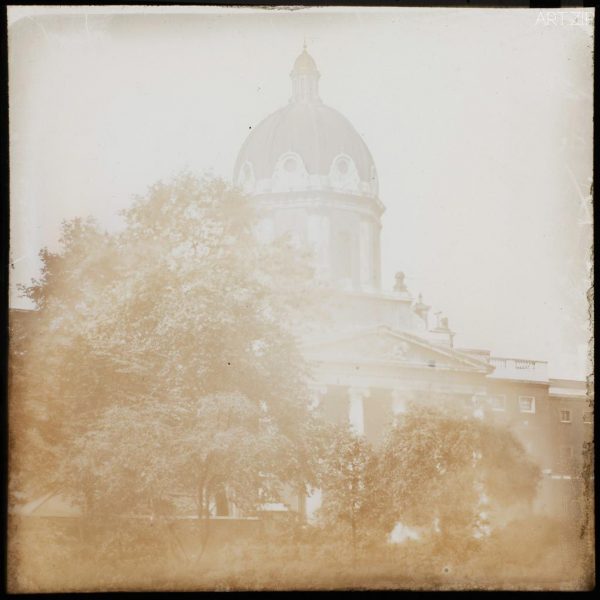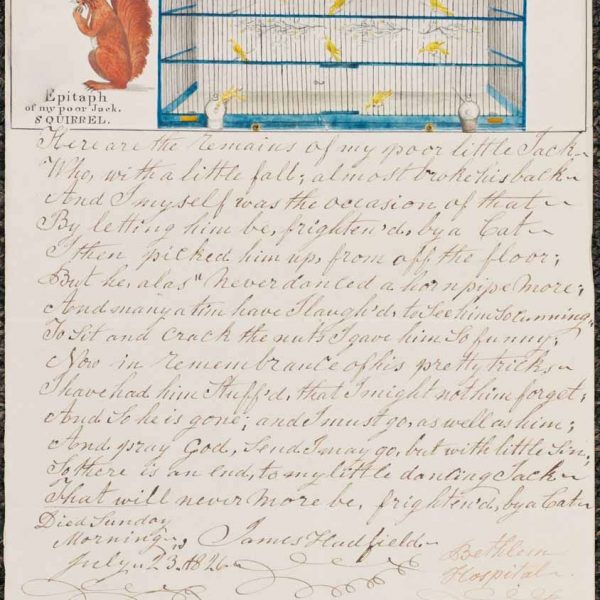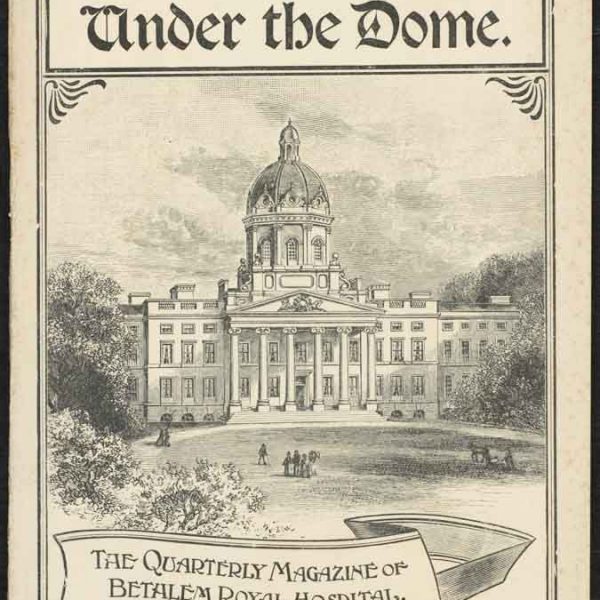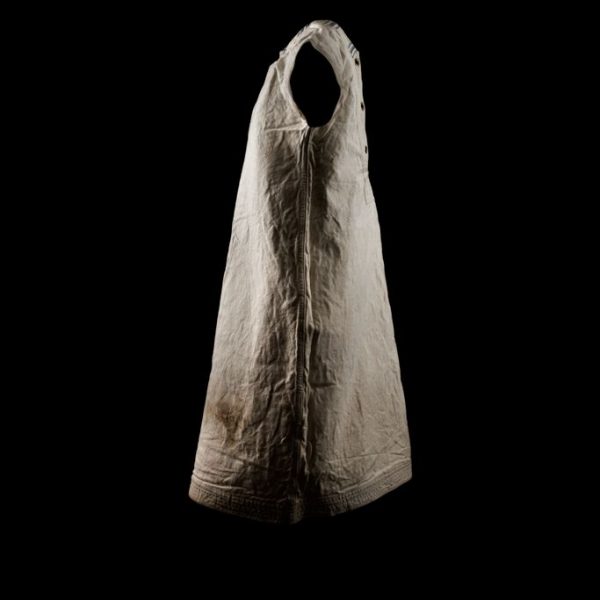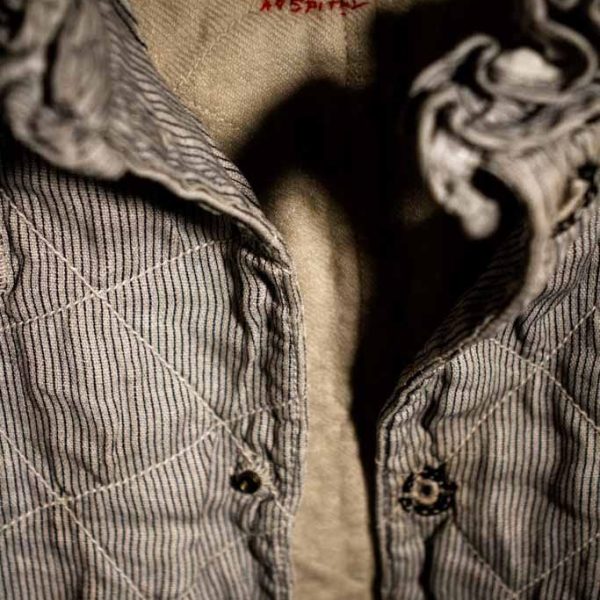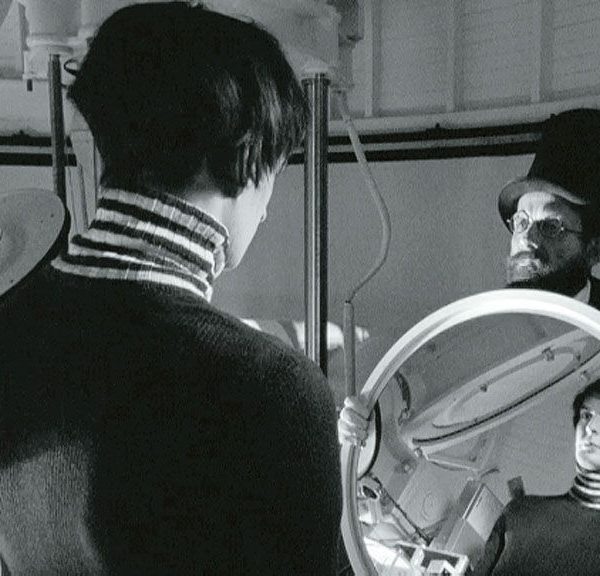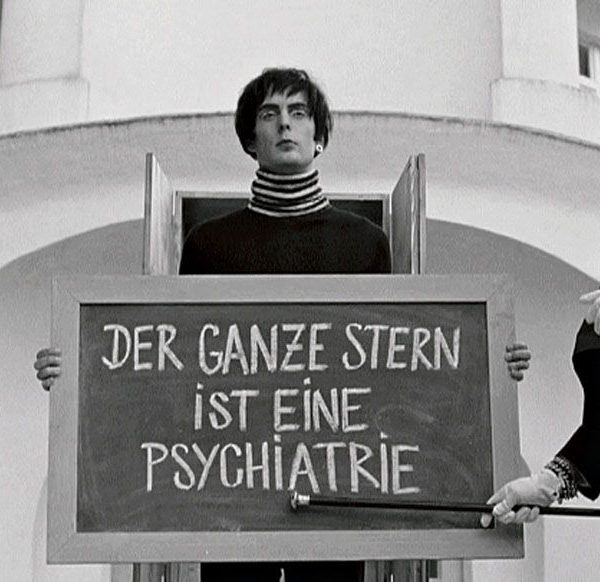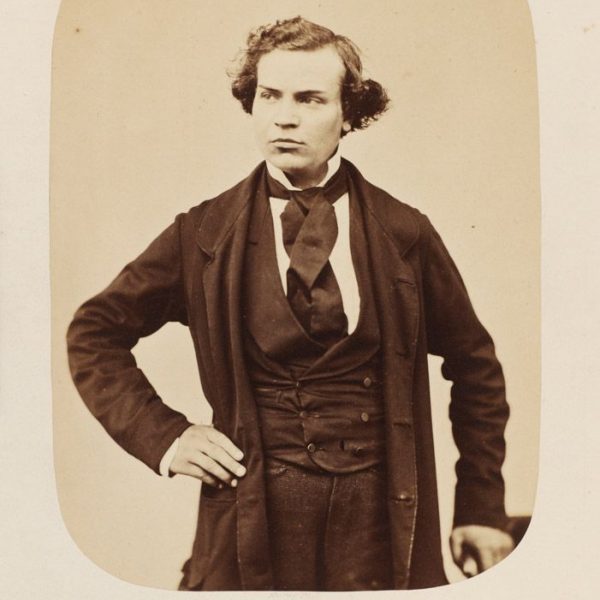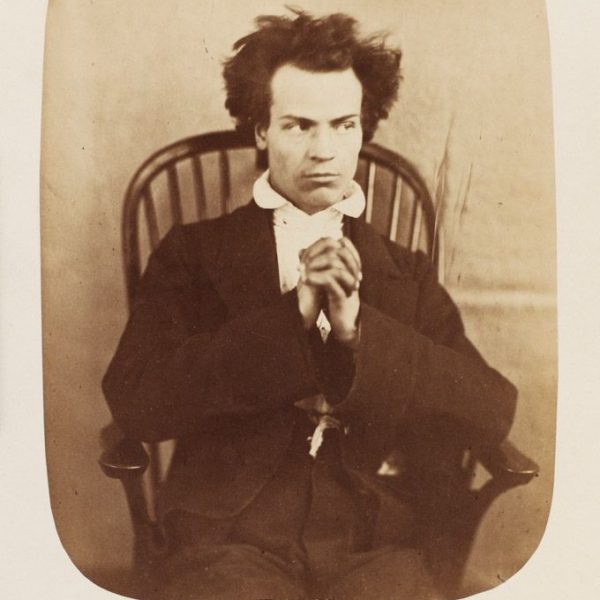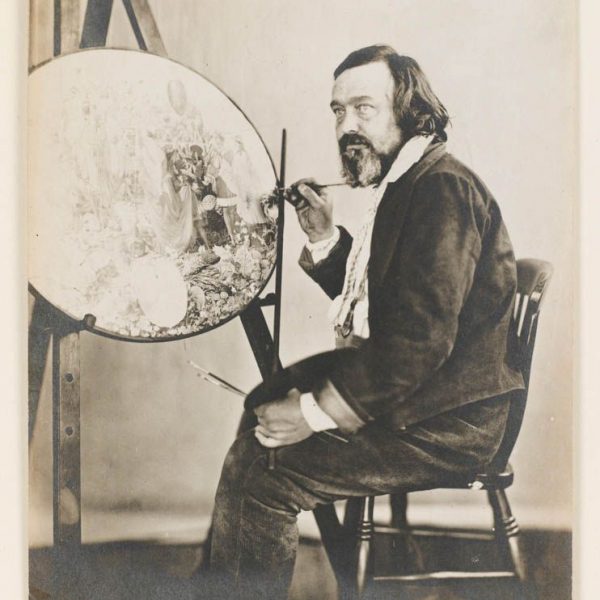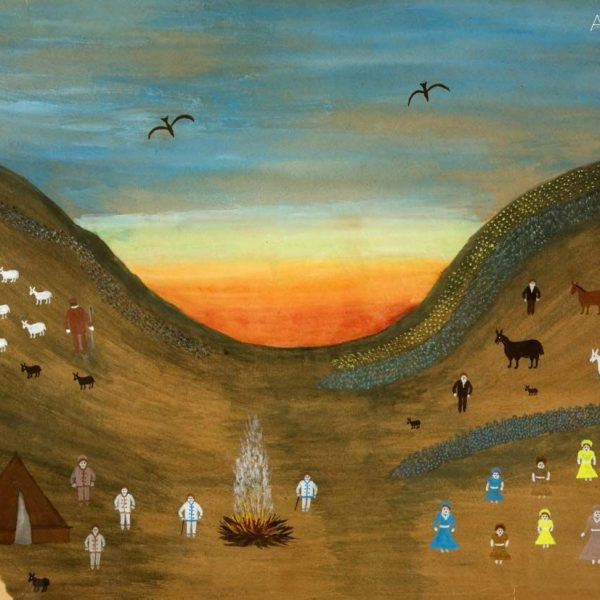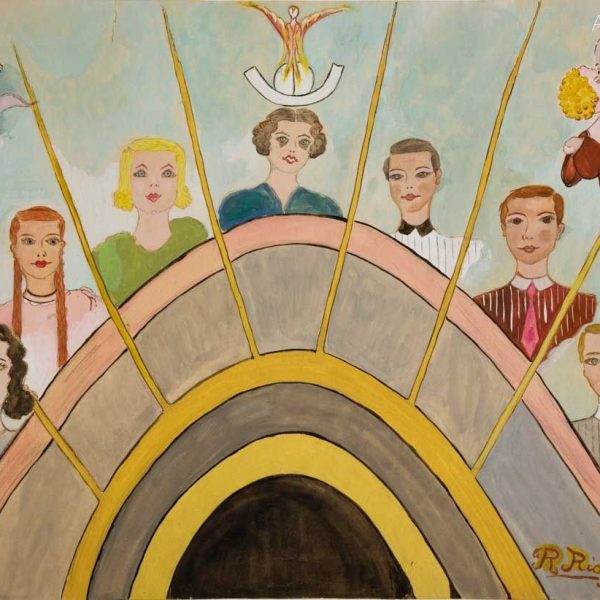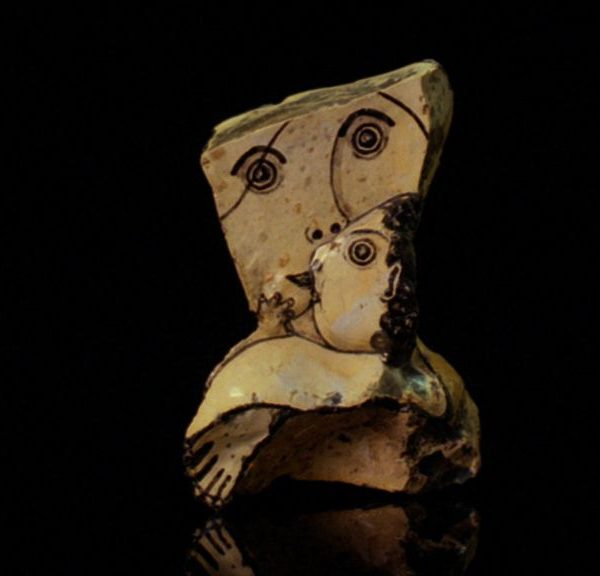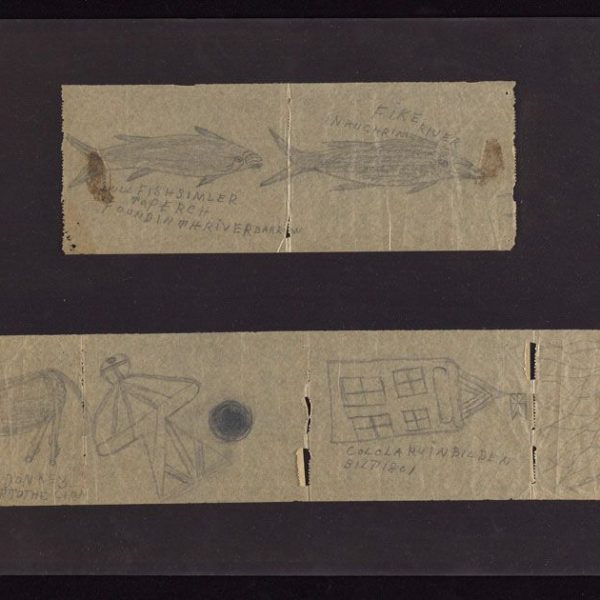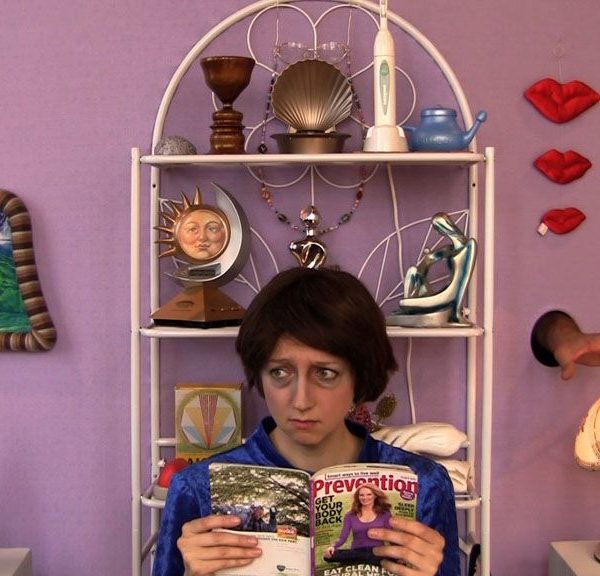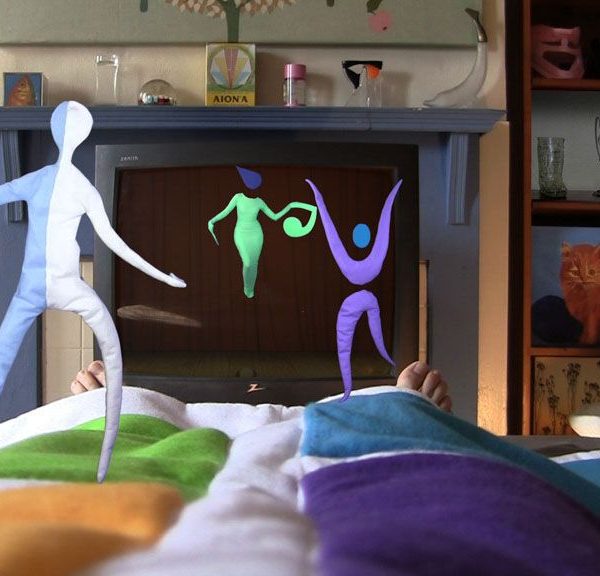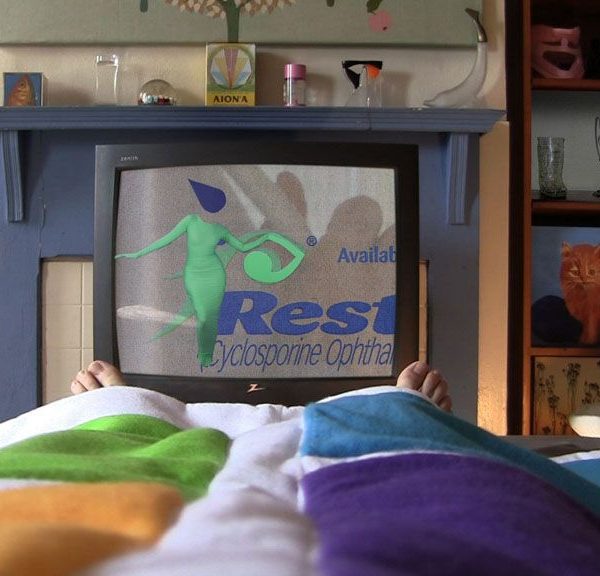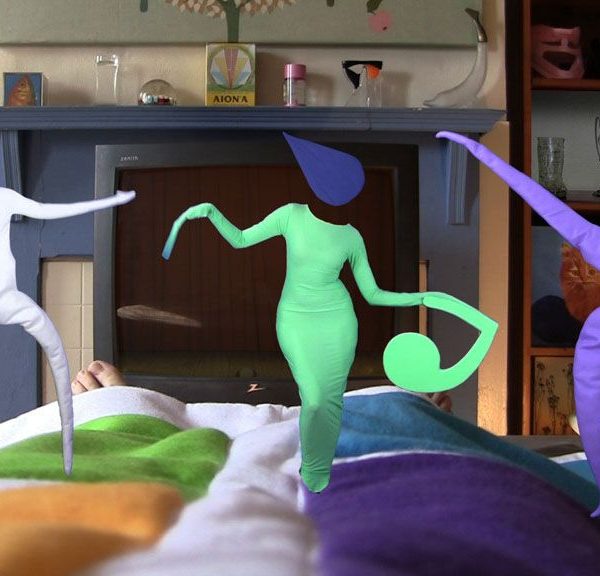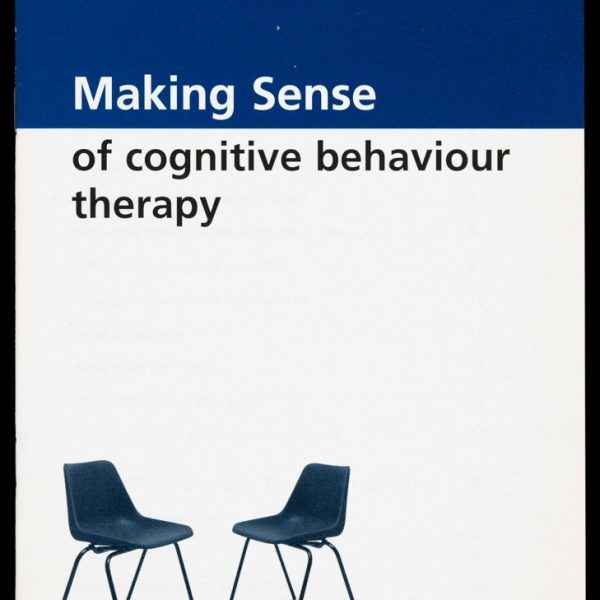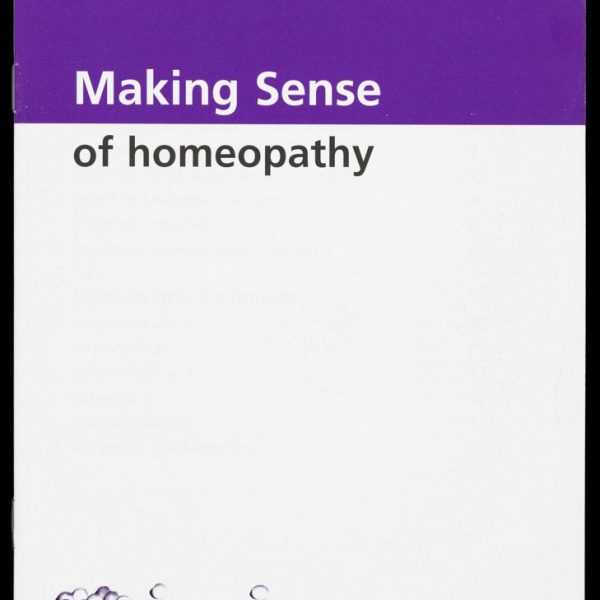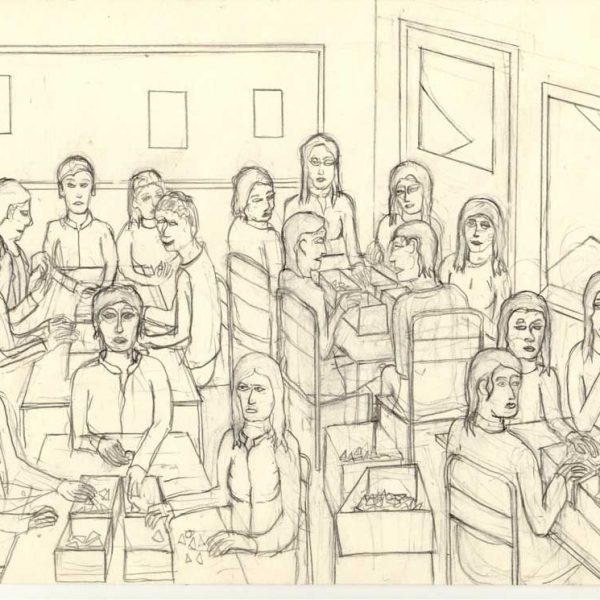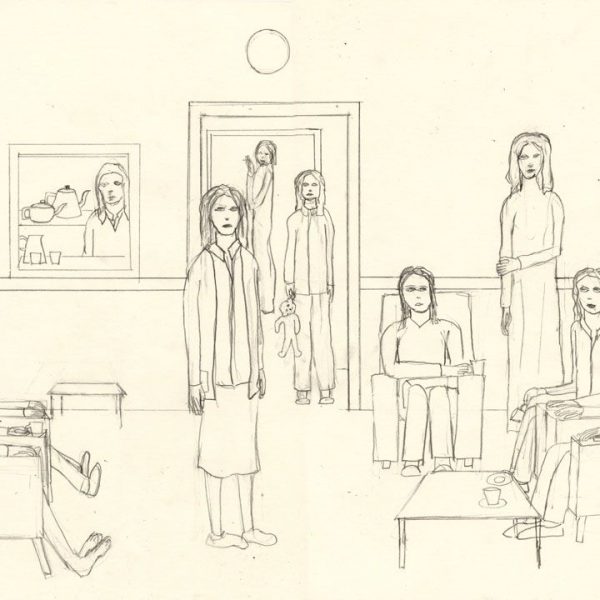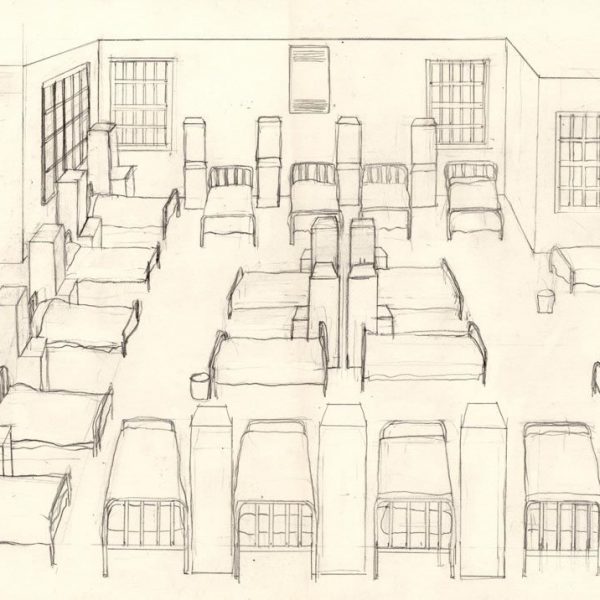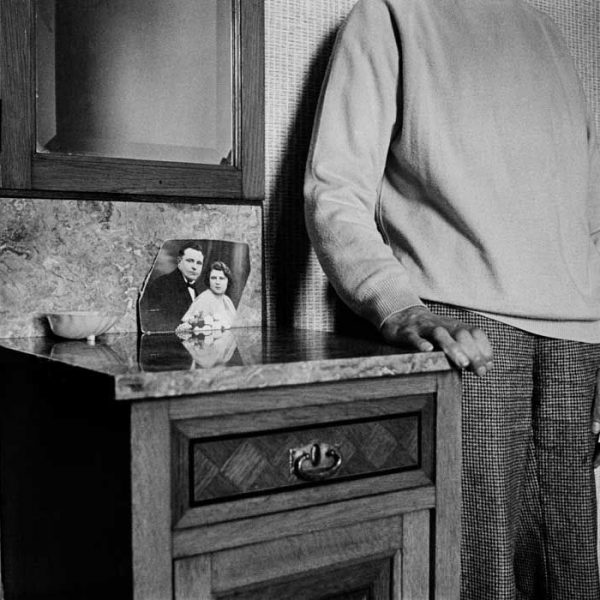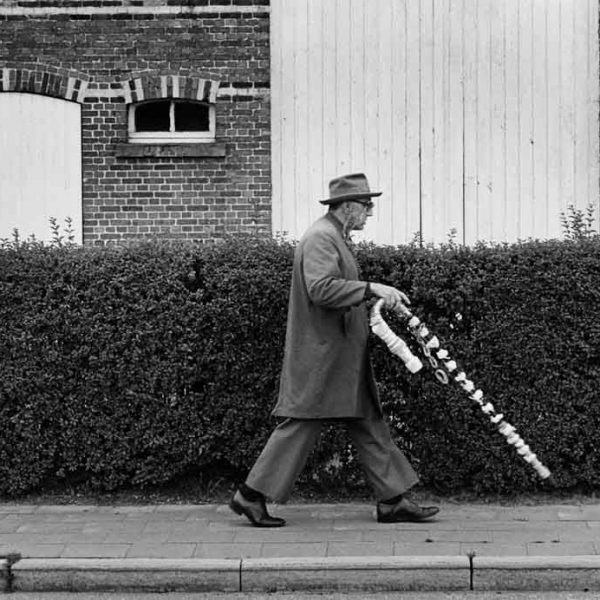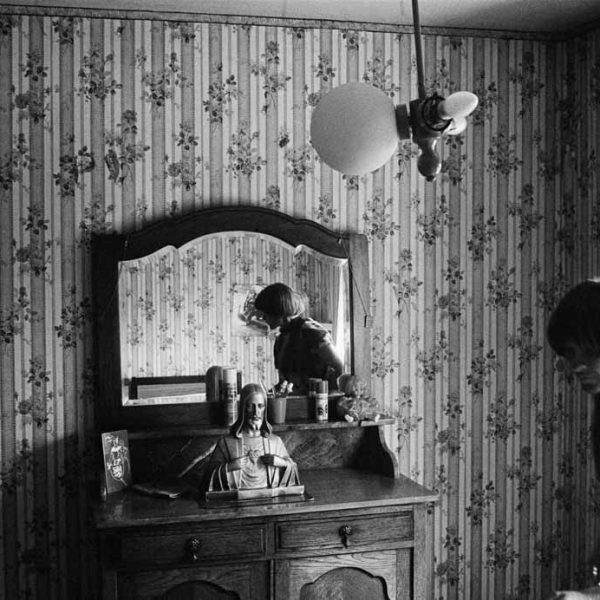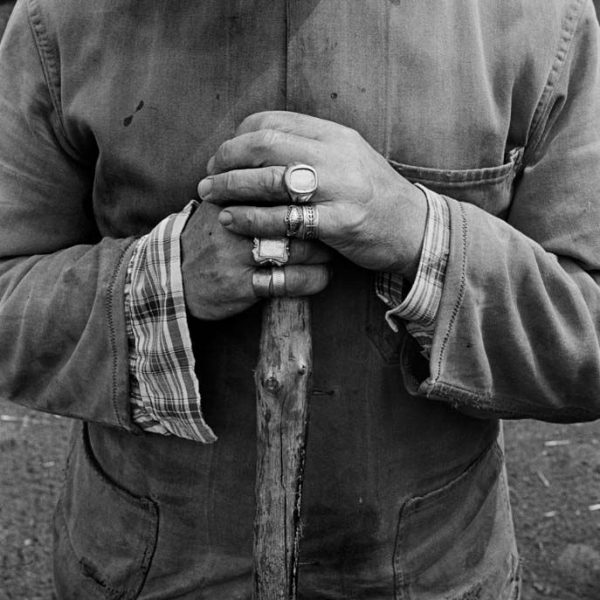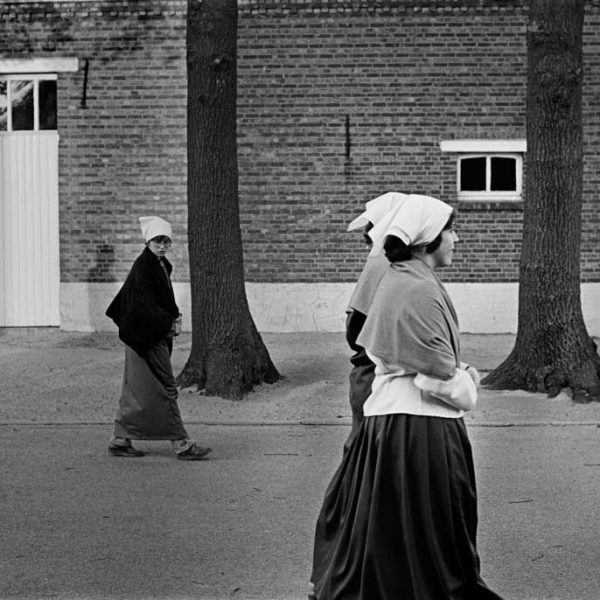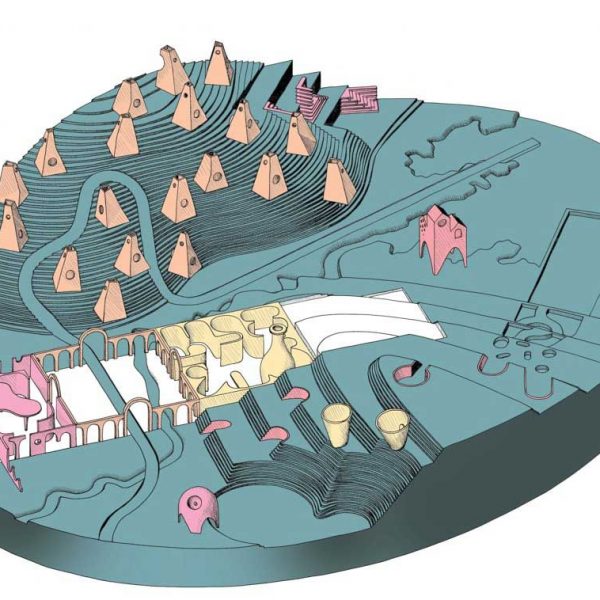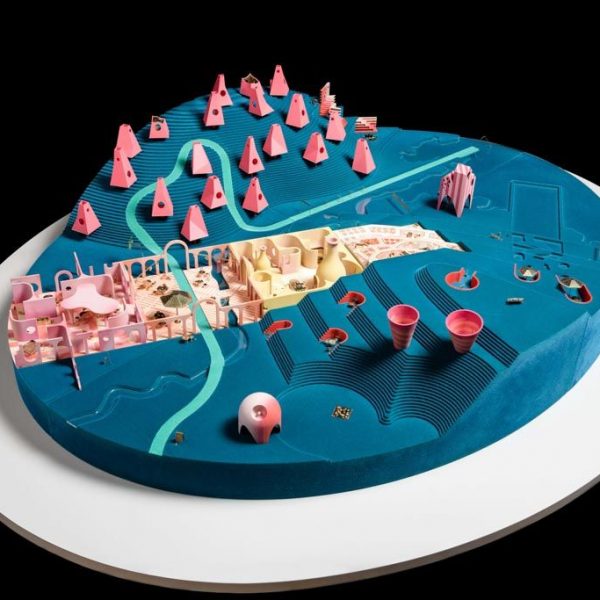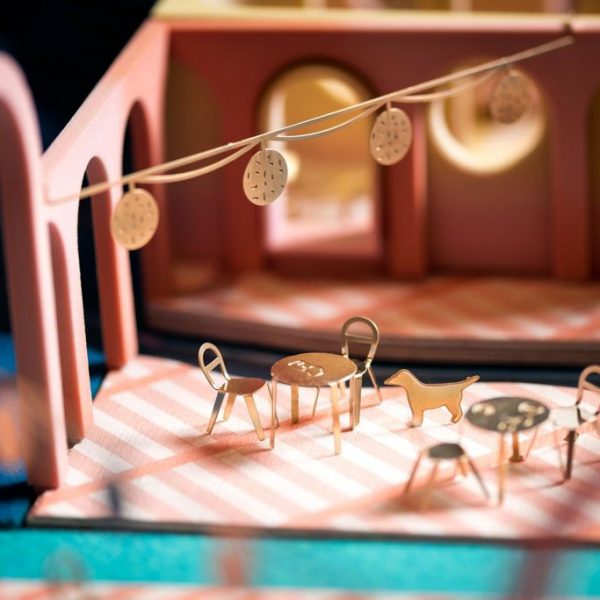
Wellcome Collection
15 September 2016 – 15 January 2017
The outside is a perfect mockery to the inside.
—Thomas Brown, Amusements Serious and Comical (1700)
The world is but a great Bedlam, where those that are more mad, lock up those who are less
—Thomas Tryon (1689)
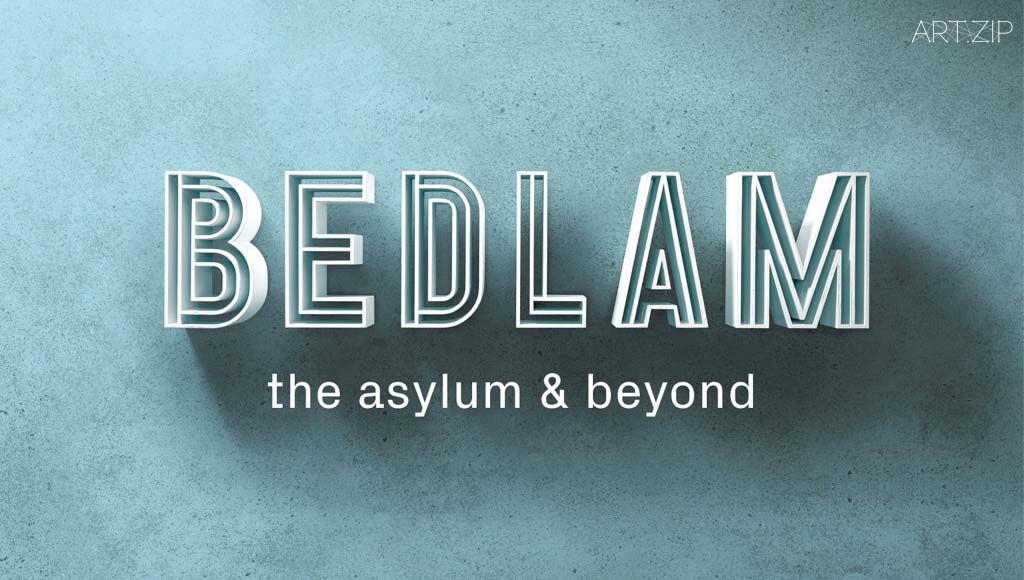
Wellcome Collection-Bedlam: the asylum & beyond 15 September 2016 – 15 January 2017
Our mental health has many dimensions: medical, psychological, social, spiritual and environmental. While the boundaries between what is deemed as ‘sanity’ or ‘insanity’ remain elastic and widely debated, we find – or are given – our place on the spectrum: perhaps with a diagnosis, a treatment, a lifestyle change or a place of safety.
精神健康包括很多方面,從身體機能到心理、社會、精神、環境等等都能影響人類的精神健康。但怎樣算“正常”?怎樣算 “失常”?這兩者的界線至今仍然很模糊,也一直備受爭議。人們會根據“失常”的程度而去尋找治療的方法,例如服用處方藥,進行某種療法,改變生活方式,又或者“躲到安全的地方”去。
In ancient times the asylum was a space, often a religious sanctuary, where individuals could seek refuge. It was from these spiritual origins that modern mental asylums emerged. They became the places where Western ideas about mental illness were defined and different approaches to treatment evolved. Throughout the asylum’s history these different ideas and approaches were created, challenged and reinvented by different and often opposing voices: those of doctors, patients, religious leaders, artists, social commentators and reformers. Their experiences shaped the meaning of mental illness and created today’s landscape of mental health care.
在古代,asylum,通常指代收容所或庇護所,收容那些需要尋求宗教庇護的教徒。正是源於這種精神庇護的功能,這樣的收容所慢慢發展成為了現代的精神療養院,而這些地方也成為了西方研究精神疾病及療法的發源地。經過漫長的發展,各式各樣的觀點與療法在這裡產生並發展,醫生、病人、宗教領袖、藝術家、社評人士、改革先鋒等等在這裡各抒己見,眾說紛紜。他們自身的經驗對於定義精神病以及現今精神病療法的形成起著舉足輕重的作用。
Bedlam: the asylum and beyond combines some of these perspectives by following the story of one such institution, ‘Bedlam’. The word became a general term for asylums but it originally referred to the Bethlem Royal Hospital in London, which was founded in the 13th century and still provides mental health care today. The exhibition focuses on the lived experiences of those who inhabited asylums or created alternatives to them. It juxtaposes historical material and medical records with individual testimonies and artworks that reflect or reimagine the institution, both as a physical and a virtual space. Today asylums have largely been consigned to history, widely regarded as outmoded, inhumane and haunted places. Meanwhile mental illness is more prevalent than ever, and our culture teems with therapeutic possibilities – yet for many there are no satisfactory options. Against this background, Bedlam: the asylum and beyond interrogates the original ideal that the asylum represented – a place of refuge, sanctuary and care – and asks whether and how it could be reclaimed.
Wellcome Collection秋季展覽《伯利恆:不只是瘋人院》圍繞的就是這樣的精神病機構而展開。Bedlam,現在泛指精神病療養院,但其實這個詞來源於倫敦的伯利恆皇家醫院(Bethlem Royal Hospital),該醫院成立於13世紀,至今仍是提供精神治療的著名醫院。通過展示一系列歷史材料、醫療檔案(包括病人親述文件和藝術作品),講述那些曾經在療養院駐留過的人的親身經歷,這個展覽讓人重新關注這個傳奇的機構,又或者說讓人重新想像了這樣的機構。如今,精神療養院往往被過去的歷史形象所綑綁,讓人覺得是過時的、不人道的、嚇人的地方。但諷刺的是,精神病其實比以往更為普遍了,無論是何種文化,都充斥著各種療法,但是許多都無法令人滿意。就是在這樣的大背景下,《伯利恆:不只是瘋人院》探討了“庇護所”最初代表的美好願景,一個充滿人文關懷的“庇護所”,並與大眾一起討論是否有必要重拾並更新這個概念,以及如何重振“庇護所”。
Bedlam has long been a byword for chaos. Now a major exhibition at Wellcome Collection opens the doors to the historic asylum from which it derives. Through the lens of the Bethlem Royal Hospital, London, ‘Bedlam: the asylum and beyond’ explores how the experience of mental illness and notions of madness have been shaped over centuries, and imagines what the future might hold.
長久以來,精神病院是大家的笑柄,是瘋狂和混亂的象徵。Wellcome Collection舉辦的這次展覽則讓大家重新回顧了精神病院的源起及其發展。從倫敦的伯利恆皇家醫院出發,該展覽展覽講述了患上精神病的體驗,探討了瘋癲的概念的形成,以及對未來的精神病治療展開想像。
‘Bedlam’ traces the rise and fall of the asylum and how it has reflected the changing attitudes of the society around it, from the early days of the Bethlem Hospital to the modern, post-asylum world in which prescription medications coexist with an increasing array of other therapies and support options. Visitors encounter scenes from successive incarnations of Bethlem, as well as other models of care from elsewhere in the UK and Europe, revealing how each was founded in an optimistic spirit of humanitarian reform, but abandoned as therapies failed and ideas changed.
此次展覽追溯了“庇護所”的興起與沒落,反映了社會對精神病院的態度的轉變,從早期的伯利恆皇家醫院,到現代的、後庇護所時代,處方藥治療及其他治療法並存。觀者將會看到一系列關於伯利恆醫院的前身以及史料記載,還有其他類似的、遍佈在英國和歐洲的庇護所。展覽揭示了這些庇護所演化的歷史,每一個精神病機構的成立之初都是懷著怎樣積極的人道主義改革,但是最終因為觀念的轉變或失敗的治療而被捨棄的命運。
Emphasising the lived experiences of individuals, the exhibition features over 150 objects and archival materials, including patient art from Adolf Wölfli, Vaslav Nijinsky and Richard Dadd, alongside works by contemporary artists, including Eva Kot’átková, Shana Moulton, Javier Tellez and the ‘Madlove: A Designer Asylum’ project. A new digital commission for the exhibition by Erica Scourti, Empathy Deck, uses an online mood monitor to generate unique tarot cards, each one offering a healing approach, remedy or thought.
為了強調個人的親身經歷,此次展覽展出了150多件藝術家物品及材料,包括瑞士藝術家Adolf Wölfli、芭蕾舞者和編舞家Vaslav Nijinsky、畫家 Richard Dadd,更有當代藝術家的作品,包括捷克藝術家Eva Kot’átková、紐約藝術家Shana Moulton、委內瑞拉藝術家Javier Tellez等,Tellez的作品是一個充滿想像的項目,名字叫做《瘋狂的愛:設計師庇護所》;另外,委託作品《Empathy Deck》由Erica Scourti所創作,參與者能通過一個在線心情板來生成獨一無二的塔羅牌,從而獲得一種療法或冥想。
- Vassal Nijinsky, Mask, 1919. Courtesy of Bethlem Museum of the Mind © The Vaslav and Romola Nijinsky Estate
- Javier Tellez, Shering Chess, 2015, Courtesy of the artist and Galerie Peter Kilchmann Zurich
- Erica Scourti, Empathy Deck, 2016. Courtesy the Artist. Commissioned by Wellcome Collection
- Eva Kot’átková, Asylum, 2013, Installation view at Kunsthalle Baden-Baden, 2014, Courtesy of Meyer Riegger, Berlin Karlsruhe and Hunt Kastner, Prague
Guest curator, author and historian, Mike Jay says: “Preserved in popular imagination as ‘Bedlam’, the Bethlem Royal Hospital is perhaps the oldest institution of its kind in the world, and has witnessed the entire history of mental illness and psychiatry. Its story is the perfect focus for Wellcome Collection to explore how medicine, art and culture define mental illness, and the big questions it raises about the individual and society.”
客座策展人、作家及歷史學家Mike Jay說:“伯利恆皇家醫院也許是世界上最古老的的精神病院了。它見證了精神病和精神病治療的歷史發展。它的發展故事非常適合在Wellcome Collection講述,讓大家在此探討醫學、藝術、以及文化是怎麼定義精神病的,同時也一併探討了由精神病引發的個人與社會的問題。”
Wellcome Collection co-curator Bárbara Rodríguez Muñoz adds: “The perspectives of patients and those with lived experiences of mental distress, as well as those who are blurring the boundaries between art and therapeutic practice, are at the core of this exhibition. At a time when the marketplace of treatment and support options is so broad, but often inaccessible, the exhibition both interrogates and reclaims the idea of the asylum as a place of sanctuary and care.”
Wellcome Collection的聯合策展人Bárbara Rodríguez Muñoza說:這次展覽的核心是試圖從病人的角度,從那些經歷過精神創傷的人的角度,還有從那些模糊了藝術實踐與治療實踐的人的角度來觀察精神病院。儘管現在治療精神疾病的方式如此繁多,但很多時候還是不能使用,這次展覽質詢了精神療養院是否能再次作為庇護和關懷的地方。
‘Bedlam’ opens with a large-scale installation, Asylum, by artist Eva Kot’átková. This 2014 work was inspired by conversations with psychiatric patients and features live performers, evoking the tensions between protection and restraint that thread throughout the exhibition. Visitors are also introduced to the alternative model of care offered by the town of Geel, Belgium, the home of patron saint of mental affliction St Dymphna, where sufferers in the middle ages were taken in by local families and became ‘boarders’, part of the community, a tradition that continues to this day.
展覽由藝術家Eva Kot’átková的大型裝置《庇護所(Asylum)》而展開。Kot’átková因為與精神病人談話後受到啟發於2014年創作了該作品。除了靜物裝置,藝術家的行為表演亦喚起了對於精神病人的保護和限制的討論,這兩者的博弈串連了整個展覽。除此之外,展覽也介紹了世界各地不一樣的精神病治療方式,其中包括了赫赫有名的比利時小鎮赫爾(Geel)--精神科醫師的守護神聖迪芙娜(St Dymphna)的家鄉。從中世紀開始,精神病患者在赫爾會“寄居”於當地的家庭,他們被稱為「旅客」,成為社區的一部分,與當地居民融洽地生活在一起。赫爾至今還保留著這個傳統。
The first scene from Bedlam shows Bethlem hospital’s eighteenth century site in Moorfields, as depicted in William Hogarth’s The Rake’s Progress (1763). This section traces how madness was first defined by the law, and reveals how the asylum was open to public visitors, inspiring numerous plays, ballads, poems and artworks. It also features architectural plans for a new Bethlem building by one of the inmates, James Tilly Matthews: the first psychiatric hospital designs by a patient. Bethlem moved in the 1800s to the building in St George’s Fields, Southwark that now houses the Imperial War Museum. Patient experiences from this era were recorded in poetry, such as Epitaph, of My Poor Jack, Squirrel II, by James Hadfield, and in a quarterly magazine, Under the Dome. The debates around physical restraint from this time are illuminated by Jane Fradgley’s haunting photographs of the quilted garments worn by patients, and definitions of normality are subverted in Javier Tellez’s film installation Caligari and the Sleepwalker (2008), based on the 1920 silent movie, the Cabinet of Dr. Caligari (which is currently featured in another Wellcome Collection exhibition: ‘States of Mind: Tracing the Edges of Consciousness’).
展覽的第一部分展示的是18世紀建於Moorfield的伯利恆醫院,正如英國畫家William Hogarth 1763年的作品《浪子生涯(The Rake’s Progress )》所繪畫的那樣。這個部分追溯了瘋癲最初是由法律所定義的,揭示了精神病院亦曾經對公眾開放參觀,激發了許多戲劇,芭蕾,詩歌和藝術的創作;更展示了由偏執型精神分裂症患者James Tilly Matthews創作的伯利恆醫院大樓設計圖,這是第一個由病人設計的精神病醫院。1800年代,伯利恆醫院遷址到Southward的St George’s Fields,那一區還有帝國戰爭博物館。在那個時期,病人的經歷以詩歌的形式來記載,例如James Hadfield的《墓誌銘,我可憐的傑克,松鼠 II(Epitaph, of My Poor Jack, Squirrel II)》,還有一些病患的文章刊登在季刊雜誌《蒼穹之下(Under the Dome)》;那時候大家的爭論都圍繞著人身自由,因為Jane Fradgley拍攝了一組精神病患者穿的特製衣服照片引起了大家的熱議;而Javier Tellez 2008年的影像裝置作品《卡里加里與夢遊者(Caligari and the Sleepwalker )(2008)》也顛覆了關於“正常”的定義,這部影像的原型來自1920年的無聲恐怖電影《卡里加里博士的小屋(the Cabinet of Dr. Caligari )》,現在正於另一個Wellcome的展覽《思想狀態:尋找意識的邊緣(States of Mind: Tracing the Edges of Consciousness)》中展出。
Photographs by Henry Hering show Bethlem inmates before and after their time in the asylum, as well as the artist Richard Dadd working in his cell while confined as an ‘incurable lunatic’. Dadd turns the patient’s gaze on the doctors with his oil portrait of Bethlem’s governor Alexander Morison (1852).
By the twentieth century, the modern mental hospital had replaced the asylum and redefined mental illness. In 1930 Bethlem moved again to a new site, a villa complex outside the city, and began to incorporate talking and community-based therapies. At this time, patient art was considered both as therapy and a tool for analysis, with several examples shown in this section including Mental Asylum Band-Copse (1910) by Adolf Wölfli, one of the earliest outsider artists.
Henry Hering的攝影作品展示了伯利恆醫院的病患在住院前後的情況,以及藝術家Richard Dadd在病房裡創作的情境,當時他被診斷為“不能治癒的精神錯亂“。Dadd從病人的角度轉向醫生,創作了油畫肖像作品《 伯利恆醫院理事亞歷山大·莫里森(Bethlem’s governor Alexander Morison) (1852)》。直到20世紀,現代精神療養院取締了庇護所,重新定義了精神病。在1930年,伯利恆又遷到了倫敦外的新址,從而開啟了談話式與社區式療法。在這段時期,病人藝術創作開始被視為治療手段以及分析工具,多個病患案例在這部分展區呈現,包括最早的素人藝術家Adolf Wölfli的作品《精神病院森林帶(Mental Asylum Band-Copse) (1910)》。
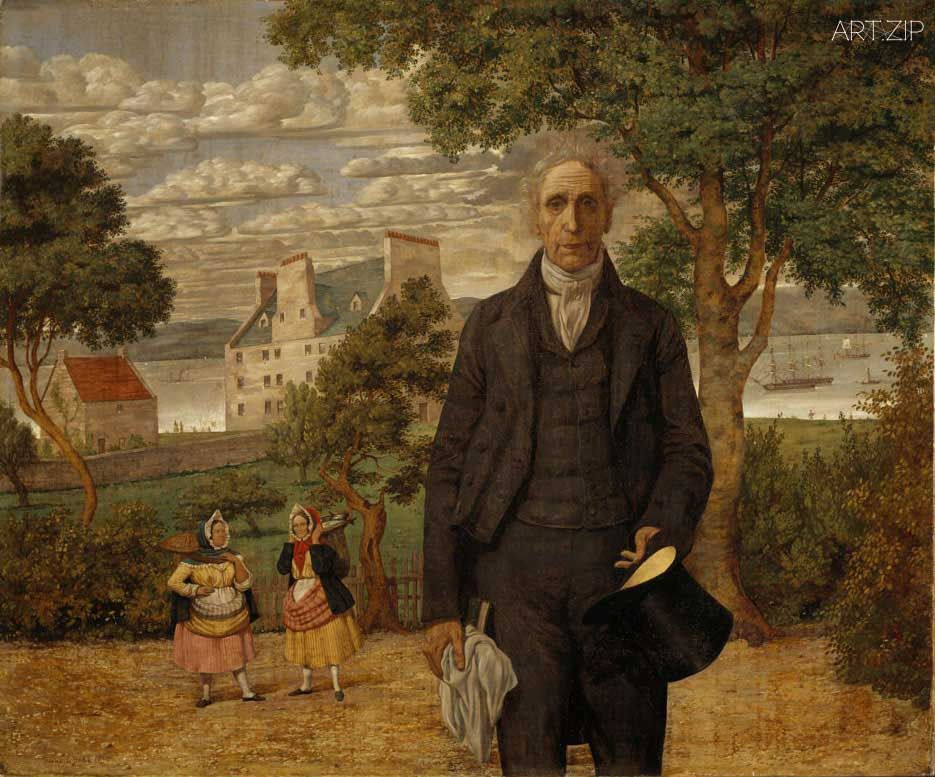
Richard Dadd, Sir Alexander Morison, 1779 – 1866. Alienist, courtesy of the Scottish National Portrait Gallery
Abandoned Goods, an essay film by Pia Borg and Edward Lawrenson tells the story of over 5500 pieces of patient artwork, now collectively known as the Adamson Collection. Psychiatry changed rapidly in the twentieth century. The advent of medication as well as other treatment options, and anti-institutional movements such as the democratic psychiatry movement led by Italian Franco Basaglia, coupled with economic pressures, led to residential hospitals being decommissioned. The incongruities of this process are captured in humorous illustrations by Ugo Guarino (1979) alongside a brochure for luxury flats in the former Friern Barnet asylum of north London.
Pia Borg和Edward Lawrenson的電影《Abandoned Goods(被丟棄之物)》講述了5500多張病人藝術作品的故事,現在這個有名的系列被稱為“亞當森藏品(Adamson Collection)”。精神病學在20世紀發展神速,藥物治療的來臨以及其他療法的興起,加上反機構運動(例如由Franco Basaglia發起的民主的精神病學運動),還有經濟壓力,這些種種原因導致了居住式醫院的停用。這一系列的改變被藝術家Ugo Guarino用幽默的插畫方式所記錄,更為諷刺的是,一併展示的還有位於北倫敦、以前是庇護所Friern Barnet,現在是豪華公寓的銷售手冊。
The last section of the exhibition explores the ever-expanding marketplace of treatments and therapies in the post-asylum world, from pharmaceuticals to traditional healing and spirituality, to online support, and artistic therapies. Restless Leg Saga (2012), a film installation by Shana Moulton, depicts a character searching through television and magazine adverts to find relief from her condition, and is shown alongside several examples of pamphlets promoting cross cultural and holistic treatment-guides from the Wellcome Library’s collection. There is a return to Bethlem and Geel in their current incarnations, with a selection of drawings by David Beales, an artist represented by the Bethlem Gallery, that show moments from his time inside psychiatric hospitals, and a collection of photographs by Hugo Minnen that depict boarders going about their daily lives in Geel.
展覽最後的一部分探索了在後庇護所時代一直增長的市場需求以及各式精神療法,從藥物治療到傳統的精神治療,到線上援助,再到藝術療法。《不寧腿傳奇(Restless Leg Saga) (2012)》是藝術家Shana Moulton的影像裝置作品,影片描述了患有不寧腿症狀的女子通過電視以及雜誌廣告尋找治療方法的故事;一併展出的還有多本從Wellcome圖書館裡借出、不同文化版本的治療指引手冊。展覽接著繼續展示了伯利恆醫院與赫爾小鎮現在的狀況,通過伯利恆畫廊代理的藝術家David Beales的畫作,繪畫了他在精神病療養院的情景;而Hugo Minnen則以攝影的方式描繪了「旅客」在赫爾小鎮的日常生活。
The final work in the exhibition is a special commission of The Vacuum Cleaner and Hannah Hull’s Madlove: A Designer Asylum, a collaborative project with designers Benjamin Koslowski and James Christian, illustrator Rosie Cunningham, and over 300 people with lived experience of mental distress who are revisiting and reimagining the asylum as ‘a safe place to go mad’.
特別委託項目《吸塵器(The Vacuum Cleaner)》和《瘋狂的愛:設計師庇護所(Madlove: A Designer Asylum)》結束了這次庇護所之旅。後者是藝術家Hannah Hull與設計師 Benjamin Koslowski,James Christian,插畫師Rosie Cunningham一起合作的項目,這個項目研究了300多位經歷過精神創傷的患者,從而設計出一個浪漫的、充滿美好願景的庇護所,讓觀者重新審視庇護所的意義,並對未來庇護所展開新的想像:那將是一个“讓人安心发疯的地方”。
Find out More:
‘Bedlam: the asylum and beyond’ runs at Wellcome Collection from 15 September 2016 to 15 January 2017.
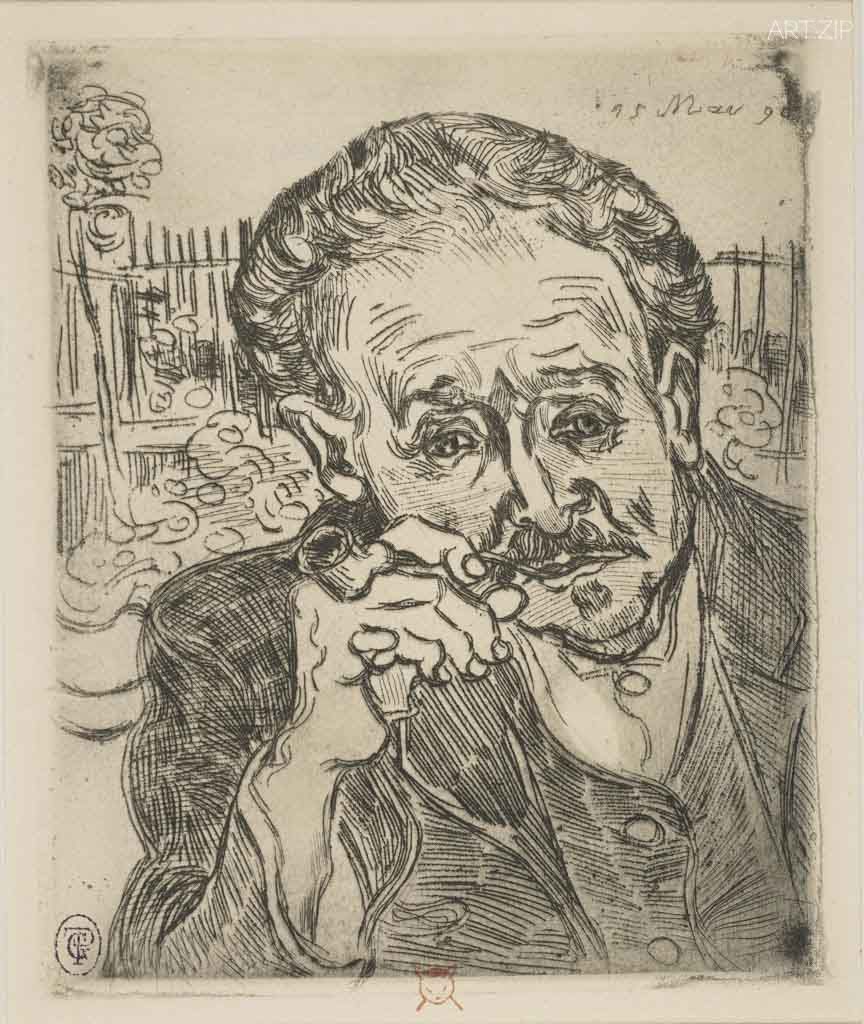
Vincent Van Gogh, L’Homme à la pipe, 1890 (c) Trustees of the British Museum
Parallel exhibition ‘Reclaiming Asylum’, is held at the Bethlem Gallery, from 21 September– 11 November 2016.
bethlemgallery.com/event/reclaiming-asylum/
